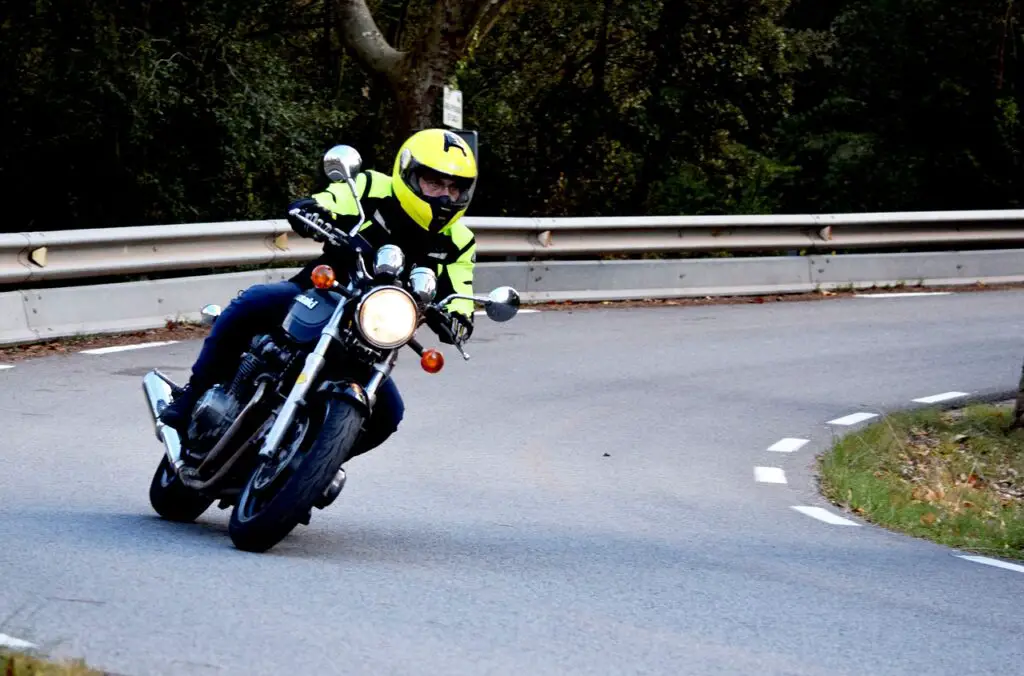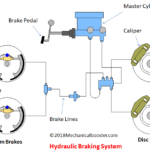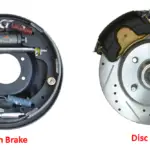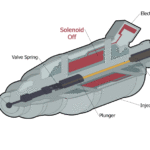The front or rear brakes may be used to slow down a motorbike. Alternatively, you may decelerate by lowering the throttle, which is called engine braking.
Is it, therefore, harmful to a motorbike to use engine braking? Motorcycles may decelerate using engine braking, rather than utilizing the brakes. Motorcyclists shouldn’t be afraid to use engine braking. In fact, according to Brian at RevCorner.com, it extends the useful life of brake pads while also improving fuel economy.
Keeping this in mind when engine braking, it’s important to remember to downshift the gear to match the road speed. Regardless of whether they are aware of it or not, the vast majority of motorcycle riders engage in this practice. And it’s a long-term benefit to this riding technique.

Mechanics of Engine Braking
While riding, the piston descends into the cylinder to allow air and fuel to be introduced into the engine. The butterfly valve opens as you accelerate, allowing air into the cylinder. Energy is generated for the wheels by burning this mixture during the combustion stroke.
In engine braking, the throttle is released and air intake is slowed to a standstill. During the intake stroke, the piston does not stop moving downward. As a result, the piston is prevented from moving farther, resulting in the wheel being dragged. As a result, your car will move more slowly.
Whenever the engine brake reduces the engine RPM faster than the wheel’s RPM, the engine starts to move from the rear wheel. Despite this, the car eventually comes to a halt since the engine is operating against the pull of gravity.
When the engine is slowing down, the rear wheel may try to drive the engine quicker than it should. As a result, the motorbike becomes unsteady and loses control. Slipper Clutch, also known as a back-torque limiter, is now standard equipment on most bikes to help avoid this. When the rear wheel attempts to drive the engine quicker than planned, this partly disengages or slides until the rear wheel’s speed meets the engine’s speed.
Also Read:
- Top 10 Best Motorcycle Helmet of 2022
- Difference Between 2 Stroke and 4 Stroke Engines
- What are Different Types of Engine – Complete Explanation
Is Motorcycle Engine Braking Beneficial Or Harmful?
This is an issue that divides opinion. The debate over whether engine braking is beneficial or detrimental continues.
Engine Braking, on the other hand, may be quite beneficial to a motorbike if used properly. In addition, it can safeguard your car in several ways.
A few of its advantages include the following:
- It lessens brake wear and tears. This talent decreases the need to utilize the brakes, therefore conserving the brakes from wear and tear.
- It also helps to avoid mishaps in the case of an emergency.
- Because you won’t be braking as often, engine braking extends the life of your brake pads.
- As a result, your motorcycle’s gas economy will increase as you use the throttle more often to change the bike’s speed.
However, there are a few small drawbacks to engine braking in certain situations.
- The rear lights on certain motorcycles, particularly older models, come on only when the rider applies the brakes. The car behind you will not be able to see that you are slowing down, which might result in an accident. You may use the brakes and engine braking to notify the follower in these situations.
- When downshifting and braking the engine, beginners should exercise caution should they lock up the back wheels and slide.
- Some may find it challenging to maintain control of the vehicle since the back wheel moves quicker than the engine. Simply downshifting your motorbike will restore control of your motorcycle in this situation. If you have a slipper clutch on your motorcycle, the issue is solved.
When Should You Apply Engine Braking?
- While riding downhill, make use of the engine braking.
When riding downhill, engine braking is really beneficial. All that is required is that you decrease the gear and use the engine brake. This decreases the amount of time the brake is used, hence keeping the brake from being overheated. As a result, brakes last longer.
This ability may unquestionably save your life in an emergency circumstance.
When you’re cycling, the person in front of you comes to a complete halt. What are your plans?
Engine braking ability comes in helpful in these types of emergency scenarios. Because, in such a case, employing engine braking and downshifting allows one to retain an adequate gear at the desired speed, which allows one to accelerate instantly without having to change the gear at the time. Additionally, utilizing engine braking in conjunction with the brake, you may bring your motorbike to a complete stop even if the distance is minimal.
- For racers, it is a highly valuable talent to have.
It is an extremely valuable skill for motorcyclists, particularly while cornering, and should be learned early on. It assists them in slowing down for a bend while yet remaining inside the engine’s rpm range.
Use Caution While Driving in Traffic.
When you use the brake to slow down, the red light that illuminates warns your following vehicle that you are coming to a halt or decreasing your speed.
However, on a few motorbike models, particularly older versions, the rear lights will only illuminate when the brakes are used. If this is done in traffic, it may result in an accident since the car in front of you will not get a signal that you are slowing down. In such instances, you may utilize the brakes in conjunction with the engine braking to simply notify the follower to stop.
Conclusion
Engine braking is a talent that can only be acquired through repetition. Over time, it will develop a habit that will be quite beneficial.
Motorcycle competency will rise if you learn to use both the front and rear brakes, as well as the engine braking method.
As a result, Engine Braking is not harmful to your motorbike in any way. In reality, it is beneficial to your bike since it comes with so many advantages, as we have explained before.








